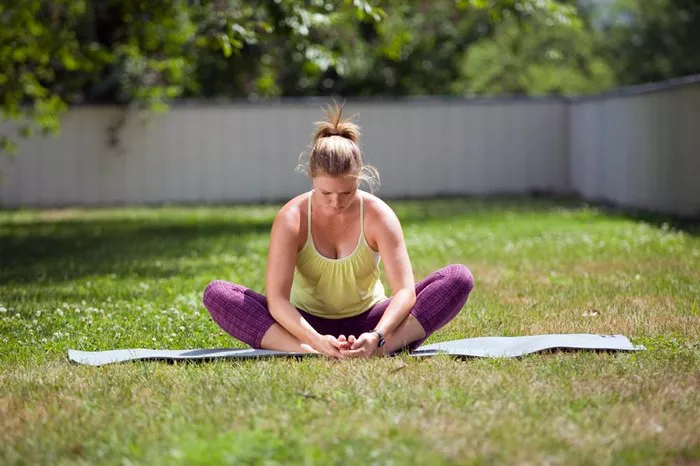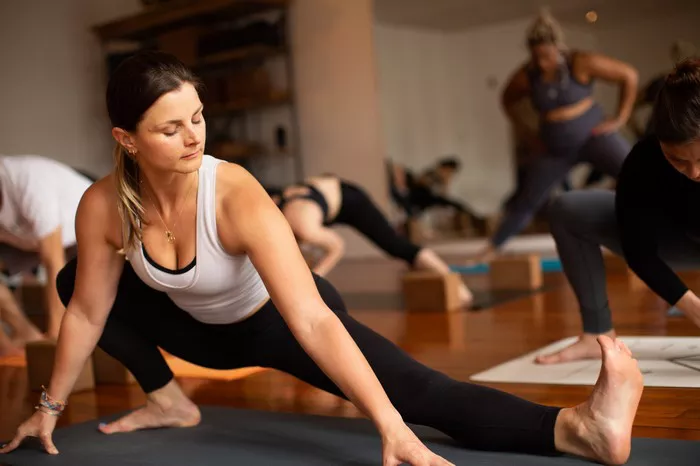Yoga is often thought of as an individual practice, but partner yoga has been growing in popularity, offering a unique and supportive way to deepen one’s practice. Partner yoga involves two people working together to perform poses that require trust, communication, and coordination. These practices are not only physically demanding but also foster a sense of connection and cooperation between partners.
In this article, we will explore some of the most challenging yoga poses for two people. These poses require strength, flexibility, and patience from both participants. Whether you are an experienced yogi or a beginner looking for a fun way to practice with a friend, partner yoga can elevate your yoga experience. Let’s delve into the details of these advanced poses, explaining their benefits, the level of difficulty, and how to properly execute them.
Introduction to Partner Yoga
Yoga has traditionally been practiced as a solo journey of self-awareness and mindfulness. However, over the years, a different aspect of yoga has emerged—partner yoga. This style involves two people practicing together, often in tandem, in a way that allows them to help and support each other while deepening their poses.
Partner yoga fosters communication, connection, and trust. It also encourages participants to explore their boundaries while respecting the comfort zones of others. The beauty of partner yoga lies in its ability to create a shared experience. You and your partner synchronize your movements and breath, helping each other achieve poses that may not be possible on your own.
While partner yoga is accessible to all levels of practitioners, certain poses require a high level of coordination, strength, and flexibility. These “hard” poses can be intimidating at first, but with practice, they can be incredibly rewarding. The benefits of these advanced partner yoga poses are immense. They challenge your balance, strengthen your muscles, improve flexibility, and enhance your focus.
In this article, we will break down the most challenging yoga poses for two people and explain how to perform them safely and effectively. Each pose will be accompanied by a detailed explanation, so even if you’re a beginner, you can understand the fundamental techniques and prepare yourself to attempt these advanced poses.
1. Double Downward Dog (Adho Mukha Svanasana Variation)
The Downward Dog (Adho Mukha Svanasana) is a fundamental pose in yoga, but when you add a partner to the mix, it becomes significantly more challenging. In the Double Downward Dog pose, one partner assumes the traditional Downward Dog position while the other partner places their hands on the first person’s shoulders, stepping their feet onto the lower back or hips. The second person then lifts their hips and presses their chest towards their thighs, forming a parallel alignment to the first person.
How to do Double Downward Dog:
Partner 1 starts in Downward Dog, with hands firmly on the mat and feet hip-width apart. Ensure your head is between your arms and that your body forms an inverted “V” shape.
Partner 2 stands in front of Partner 1, placing their hands on Partner 1’s shoulders. They then step their feet onto Partner 1’s back, one foot at a time, carefully balancing.
Partner 2 lifts their hips high and brings their chest towards their thighs, aligning their body parallel to the floor.
Both partners should work to maintain a strong core and keep their balance steady. Communication is key during this pose—let your partner know if they feel unsteady or uncomfortable.
Benefits:
- Strengthens the core, shoulders, and arms
- Improves balance and coordination
- Increases flexibility in the hips and hamstrings
Difficulty: Advanced
This pose demands significant strength and flexibility from both participants. The first partner needs to maintain a stable Downward Dog, while the second partner must balance carefully and avoid putting too much pressure on the back.
2. Partner Plank (Phalakasana Variation)
Plank pose is a great way to build strength in your core, arms, and shoulders. The partner plank adds an element of balance and teamwork that turns this already challenging pose into an even greater test of coordination and trust.
How to do Partner Plank:
Partner 1 starts in a traditional Plank Pose, with hands placed directly under the shoulders and the body forming a straight line from head to heels.
Partner 2 also enters Plank Pose facing Partner 1, positioning their hands beneath their shoulders. The partners should make eye contact to build trust and align their bodies.
Partner 2 now steps one foot forward and places it on Partner 1’s shoulder or upper arm, carefully balancing on the plank.
Partner 1 should maintain a strong plank while keeping their hips level and core engaged. Partner 2 must balance their weight carefully and adjust their foot position to maintain stability.
Both partners should hold the plank position for a few breaths before slowly releasing.
Benefits:
- Builds core strength and stability
- Strengthens the shoulders, arms, and legs
- Improves balance and coordination
Difficulty: Intermediate to Advanced
This is an advanced variation of the standard plank pose. It requires strong core engagement and upper body strength from both participants, as well as good balance and communication.
3. Flying Warrior (Virabhadrasana III Variation)
The Flying Warrior pose is an advanced partner pose that combines strength, balance, and trust. One partner performs Warrior III (Virabhadrasana III) while the other supports them by holding their extended leg. This pose demands focus, stability, and cooperation between the partners.
How to do Flying Warrior:
Partner 1 begins in Warrior III, balancing on one leg while extending the other leg straight behind them and keeping their arms extended forward, parallel to the floor.
Partner 2 stands in front of Partner 1, and with their arms raised, they grasp the raised foot of Partner 1, lifting it higher to deepen the stretch.
Partner 2 supports Partner 1’s leg with both hands, ensuring that they have enough balance and leverage to hold the position.
The partners hold the pose for several breaths, ensuring that the standing leg remains stable and the back leg stays extended with energy.
Once both partners are ready, carefully release the pose and switch sides.
Benefits:
- Increases balance, stability, and coordination
- Strengthens the core, legs, and arms
- Improves flexibility in the hips and legs
Difficulty: Advanced
This pose requires exceptional balance and strength from the person performing Warrior III and trust from the partner lifting the leg. The person supporting must also engage their core and arms to provide a steady foundation.
4. Partner Chair Pose (Utkatasana Variation)
Chair Pose (Utkatasana) is already a challenging pose, but when you add a partner into the mix, it requires greater strength, communication, and balance. The partners will face each other, squat into Chair Pose, and then interlock their arms to support one another’s balance.
How to do Partner Chair Pose:
Partner 1 and Partner 2 stand facing each other with feet hip-width apart.
Both partners bend their knees and lower their hips as if sitting in an invisible chair, ensuring the knees don’t extend beyond the toes.
Partner 1 and Partner 2 raise their arms and interlock them at the forearms, creating a stable support structure.
Both partners must maintain a deep squat while keeping their backs straight and their abdomens engaged. Communication is crucial for ensuring both partners are maintaining equal weight distribution.
Hold the pose for several breaths before releasing the arms and rising back to standing.
Benefits:
- Strengthens the legs, glutes, and core
- Improves balance and stability
- Increases flexibility in the hips and ankles
Difficulty: Intermediate
Although the Partner Chair Pose is less complex than some of the other poses on this list, it still requires a great deal of strength and stamina, especially for the legs and core.
5. Partner Wheel Pose (Urdhva Dhanurasana)
The Wheel Pose (Urdhva Dhanurasana) is one of the most advanced backbends in yoga. In this partner variation, one partner assists the other by providing support and lifting them into the full wheel position.
How to do Partner Wheel Pose:
Partner 1 begins by lying on their back with their knees bent and feet flat on the floor. They then press their hands into the floor near their ears and push their hips upward, coming into Wheel Pose.
Partner 2 stands at Partner 1’s head and places their hands on Partner 1’s shoulders or upper back, supporting them as they deepen into the wheel.
Partner 2 can also help by gently guiding Partner 1’s arms into a deeper stretch, providing gentle pressure for a more profound backbend.
Both partners hold the pose for several breaths, ensuring that Partner 1 feels safe and comfortable in the pose.
Benefits:
- Opens up the chest, shoulders, and hips
- Increases flexibility and mobility in the spine
- Strengthens the arms, legs, and core
Difficulty: Advanced
This pose requires a high level of trust and support. The person performing the Wheel Pose needs strong arms, legs, and back muscles, while the assisting partner must provide careful and controlled support.
See Also: What Are Some Fun Two-Person Yoga Poses to Try Together?
Conclusion
Yoga, in its many forms, is a beautiful practice that cultivates strength, flexibility, balance, and inner peace. Partner yoga elevates these benefits by fostering a deeper sense of connection and mutual support. Challenging partner poses, like the ones discussed in this article, push both participants to their limits while creating a stronger bond and trust between them.
As with any advanced yoga poses, it’s important to practice these poses with awareness and patience. Start with the basics, gradually increasing your strength and flexibility before attempting more difficult poses. Communication is essential in partner yoga—make sure to listen to your partner, give and receive feedback, and work together to create a safe and effective practice.
Whether you are practicing with a friend, family member, or partner, these poses will help you build both physical and emotional strength. With time and consistent practice, you will notice improvements not only in your flexibility and strength but also in your ability to trust and communicate with others—both on and off the mat.
You Might Be Interested In:























